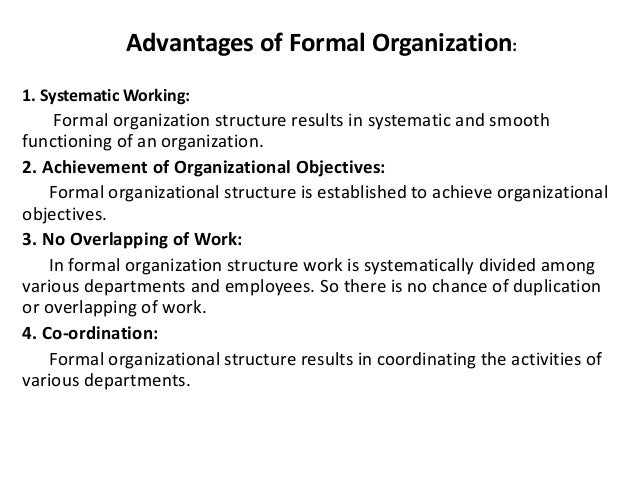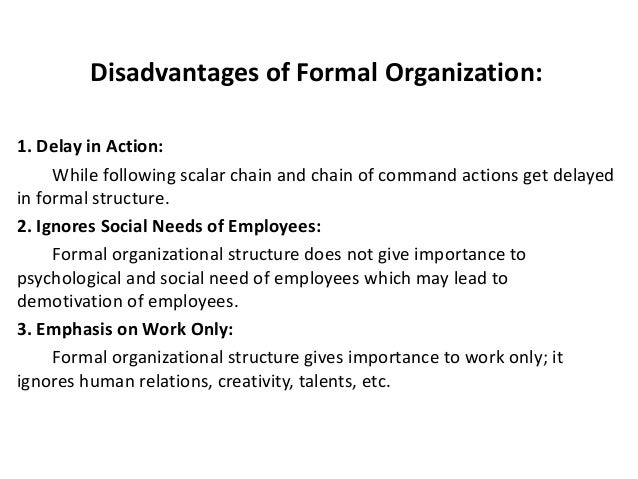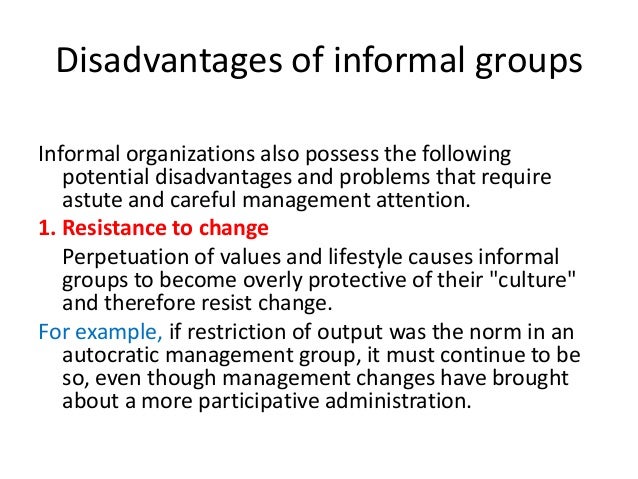Relevance: Sociology: Works and Economic Life: Formal and informal organization of work.
Formal structure of an organization or group includes a fixed set of rules for intra-organization procedures and structures.
What are Formal Organizations?
The formal structure of a group or organization includes a fixed set of rules of procedures and structures, usually set out in writing, with a language of rules that ostensibly leave little discretion for interpretation. In some societies and organizations, such rules may be strictly followed; in others, they may be little more than an empty formalism.
Characteristics of Formal Organization
A formal organization has its own set of distinct characteristics. These include well-defined rules and regulation, an organizational structure, and determined objectives and policies, among other characteristics.

Distinction from Informal Organization
Formal rules are often adapted to subjective interests giving the practical everyday life of an organization more informality. Practical experience shows no organization is ever completely rule-bound: all real organizations represent some mix of formal and informal characteristics. When attempting to create a formal structure for an organization, it is necessary to recognize informal organization in order to create workable structures. Tended effectively, the informal organization complements the more explicit structures, plans, and processes of the formal organization. Informal organization can accelerate and enhance responses to unanticipated events, foster innovation, enable people to solve problems that require collaboration across boundaries, and create paths where the formal organization may someday need to pave a way.

Informal Structure
The informal organization is the aggregate of behaviors, interactions, norms, and personal/professional connections.
What is Informal Organization?
The informal organization is the interlocking social structure that governs how people work together in practice. It is the aggregate of behaviors, interactions, norms, and personal/professional connections through which work gets done and relationships are built among people. It consists of a dynamic set of personal relationships, social networks, communities of common interest, and emotional sources of motivation. The informal organization evolves organically in response to changes in the work environment, the flux of people through its porous boundaries, and the complex social dynamics of its members.

Key Characteristics of Informal Organizations
The nature of the informal organization becomes more distinct when its key characteristics are juxtaposed with those of the formal organization. The informal organization is characterized by constant evolution; grass roots; being dynamic and responsive; requiring insider knowledge to be seen; treating people as individuals; being flat and fluid; being cohered by trust and reciprocity; and being difficult to pin down.
Functions of Informal Organizations
Keith Davis suggests that informal groups serve at least four major functions within the formal organizational structure.
First, they perpetuate the cultural and social values that the group holds dear. Certain values are usually already commonly held among informal group members. Day-to-day interaction reinforces these values that perpetuate a particular lifestyle and preserve group unity and integrity. For example, a college management class of 50 students may contain several informal groups that constitute the informal organization within the formal structure of the class.
Second, they provide social status and satisfaction that may not be obtained from the formal organization. In a large organization, a worker may feel like an anonymous number rather than a unique individual. Members of informal groups share jokes and gripes, eat together, play and work together, and are friends—contributing to personal esteem, satisfaction, and a feeling of worth.
Third, the informal group develops a communication channel to keep its members informed about what management actions will affect them in various ways. Many astute managers use the grapevine to “informally” convey certain information about company actions and rumors.
Finally, they provide social control by influencing and regulating behavior inside and outside the group. Internal control persuades members of the group to conform to its lifestyle. For example, if a student starts to wear a coat and tie to class, informal group members may convince the student that such attire is not acceptable and therefore to return to sandals, jeans, and T-shirts.


